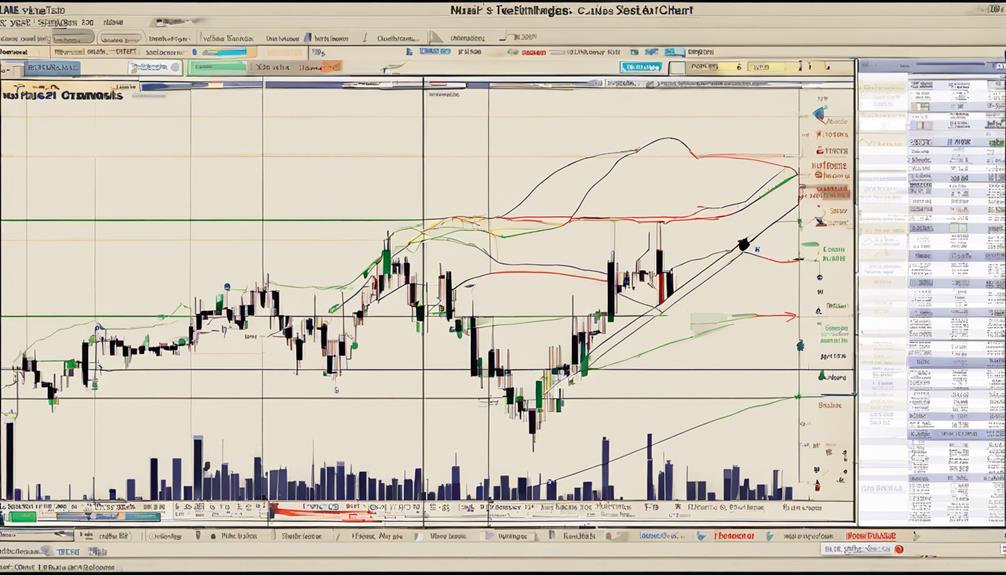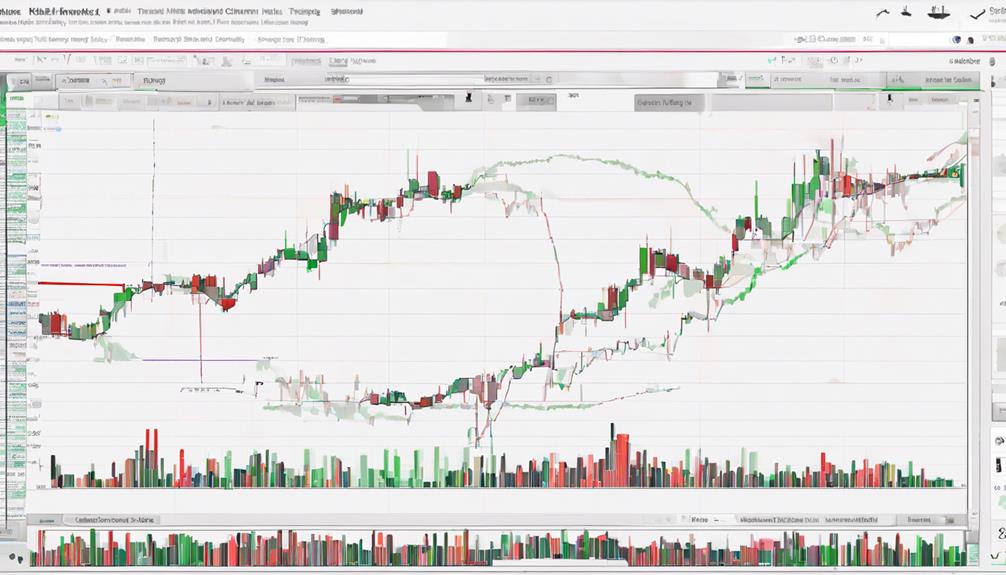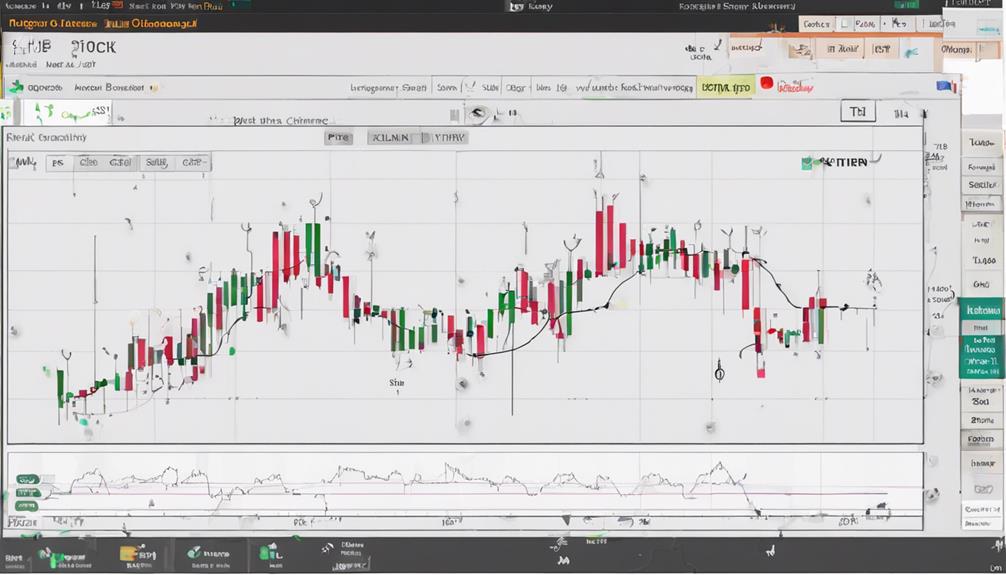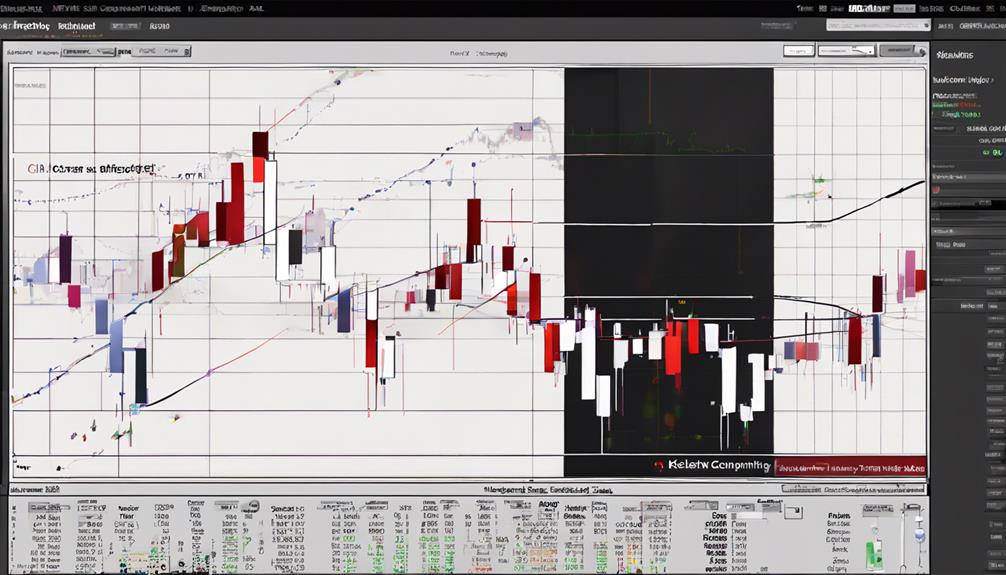Discover the intricacies of mastering the Keltner Channel trading strategy. Learn how to calculate using a 20-period EMA and ATR for dynamic support and resistance. Identify market turning points by observing price action beyond the boundaries and utilizing confirmation signals for accuracy. Gauge trends by monitoring price movements and utilizing reversal signals. Master the squeeze signals by interpreting band contractions, indicating potential breakout opportunities. Utilize advanced trading strategies by integrating technical indicators for precise trend analysis. Understanding Keltner Channels can greatly enhance your trading capabilities and maximize your potential for profitable trades.
Keltner Channel Calculation Guide
The calculation process for Keltner Channels, a technical analysis tool used in trading, involves utilizing a 20-period Exponential Moving Average (EMA) as the central reference point for determining the upper and lower bands.
The Upper band is established by adding 2 times the Average True Range (ATR) multiplier to the EMA, while the Lower band is determined by subtracting 2 times the ATR from the EMA. These bands act as dynamic support and resistance levels, adapting to market volatility to provide traders with adaptive boundary levels for trend analysis.
The EMA period of 20 plays an essential role in setting up the Keltner Channels, allowing traders to identify potential channel signals for decision-making. By understanding the calculations involved in setting up Keltner Channels, traders can effectively utilize this tool to gauge market trends and make informed trading decisions based on the adaptive boundary levels provided by the upper and lower bands.
Market Turning Point Identification

Identifying market turning points involves keen observation of price action beyond the boundaries defined by Keltner Channels. Anticipation of shifts in the market near key support and resistance levels is essential. Confirmation signals, such as price rejection, enhance the accuracy of pinpointing market turning points. When price action occurs outside the channel boundaries, it may indicate potential shifts or reversals in the market trend.
Vigilance towards these movements can aid in timely identification of vital market turning points. By staying alert to price behavior and being prepared for shifts indicated by the Keltner Channels, traders can position themselves advantageously. Recognizing the significance of movements beyond the channel boundaries and actively looking for signs of market turning points can improve trading strategies.
Utilizing Keltner Channels in conjunction with a thorough analysis of price action can provide valuable insights into market dynamics and facilitate informed decision-making.
Utilizing Keltner Channels for Trends

Utilizing Keltner Channels in trend analysis allows traders to effectively gauge market dynamics and potential shifts based on price movements within defined boundaries. The 20-period EMA used in Keltner Channels aids in trend assessment and identification.
Monitoring price movements outside the channel boundaries is important as it indicates potential trend shifts. To enhance accuracy in trend analysis, it is essential to confirm signals with price rejection at support/resistance levels.
Reversal signals outside the channel boundaries can suggest possible trend reversals, serving as significant points for traders to take into account. By combining Keltner Channels with other indicators, traders can attain a detailed view for trend identification, increasing the strength of their analysis.
This approach provides traders with a structured method to interpret market trends and make informed decisions based on the signals derived from the Keltner Channels.
Mastering Keltner Channel Squeeze Signals

Mastering the Keltner Channel squeeze signals involves adeptly interpreting the contraction of bands towards the middle line to anticipate potential breakout opportunities in the market.
When the Keltner Channels contract, it indicates low volatility, suggesting that the market is in a period of consolidation. Traders keenly watch for this squeeze pattern as it often precedes significant price movements.
The contraction of the bands signals a potential breakout, where prices may experience increased volatility and directional movement. To enhance signal confirmation, traders often combine the squeeze pattern analysis with monitoring volume and other technical indicators.
Successfully interpreting the squeeze pattern can lead to identifying high-probability trading opportunities. By understanding how to read the Keltner Channel squeeze signals effectively, traders can position themselves strategically to capitalize on potential market movements, making this strategy a valuable tool in a trader's arsenal for maneuvering dynamic market conditions.
Advanced Trading Strategies With Keltner Channels

The application of advanced trading strategies with Keltner Channels involves a detailed approach that integrates key technical indicators for thorough trend analysis and informed decision-making in dynamic market environments. Utilizing the 20-period EMA enhances trend precision, while observing the channel angle confirms trends and provides insights into market sentiment.
Dynamic support and resistance levels play an essential role in identifying trend reversals with precision, and monitoring price behavior around channel lines is vital for enhancing trend identification accuracy. By combining Keltner Channels with other technical indicators, such as moving averages or oscillators, traders can strengthen their trend analysis capabilities, leading to more informed trading decisions.
These strategies enable traders to navigate the complexities of the market with a structured and analytical approach, increasing the likelihood of successful outcomes in their trading endeavors.
Frequently Asked Questions
What Are the Best Settings for the Keltner Channel?
Ideal parameters for Keltner Channels typically involve a 20-period EMA as the middle line and an ATR offset multiplier of 1. Customizing settings by adjusting EMA and ATR lengths enhances trend identification and signal accuracy.
Backtesting results can validate the effectiveness of these adjustments. These settings aid in measuring volatility, generating entry signals, developing exit strategies, managing risk, determining position sizes, and aligning with trading psychology for a thorough trading approach.
Are Keltner Channels Accurate?
Keltner Channels can provide valuable insights into market dynamics, offering an accuracy assessment for traders. Their performance in signal reliability, volatility assessment, and trend identification is notable.
What Is the King Keltner Trading Strategy?
The King Keltner Trading Strategy is a method that leverages Keltner Channels for identifying trends and entry/exit points in trading. This strategy emphasizes precise entry signals based on price action, effective risk management through position sizing and stop loss orders, trend following techniques, volatility analysis, and the use of technical indicators and candlestick patterns.
An understanding of market psychology is essential for successful implementation of this strategy to enhance profitability and trading efficiency.
What Is the Strategy of the Keltner Channel Swing Trading?
Swing trading with the Keltner Channel strategy involves utilizing technical analysis, price action, and trend following to identify entry and exit points based on the channel boundaries. Traders focus on risk management by considering volatility analysis, market psychology, and candlestick patterns.
Entry signals are determined within the channel, while exit strategies are formulated to capitalize on price swings. This strategy aims to profit from short to medium-term market movements effectively.
Conclusion
To sum up, mastering the Keltner Channel trading strategy involves understanding its calculation, identifying market turning points, utilizing it for trend analysis, and mastering squeeze signals.
By incorporating advanced trading strategies with Keltner Channels, traders can enhance their decision-making process and potentially improve their trading outcomes.
The Keltner Channels act as a guiding light in the complex world of trading, helping traders navigate through the ups and downs of the market like a lighthouse guiding ships through turbulent waters.
